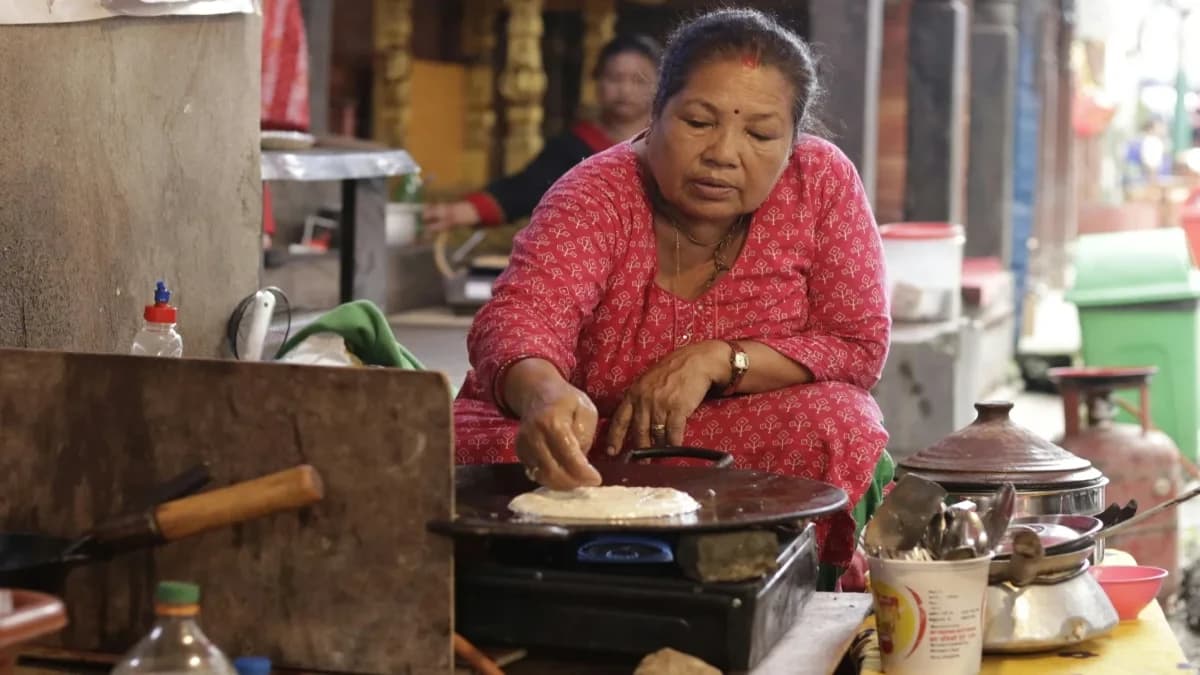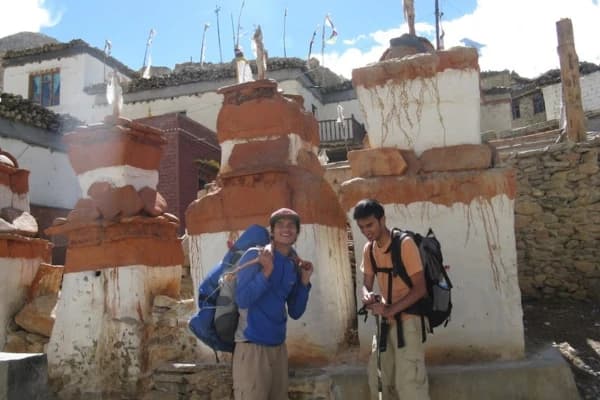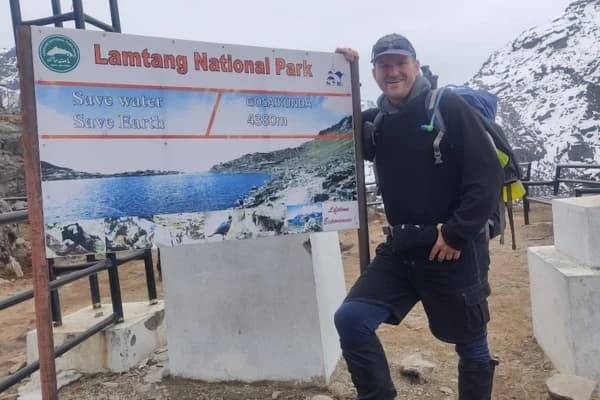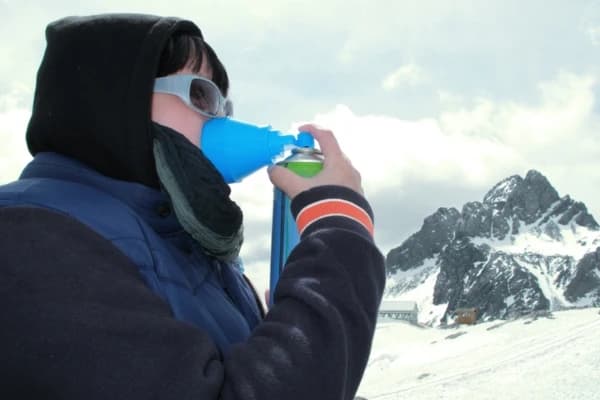Nepal is not just about tall mountains and peaceful temples; it is also a place where every meal feels like home. From hot bowls of dal bhat after a long trek to sweet yogurt during festivals, Nepali food is full of comfort and culture. In this blog, we’ll explore the famous Nepali foods and drinks that locals love and travelers can’t stop talking about.
If you ever visit Nepal, don’t leave without tasting these dishes; they’ll give you a real sense of the country’s heart and flavor.
Explore Nepal’s flavors, one bite and one sip at a time with Nepal Gateway Trekking.
Why Nepali Cuisine Is Unique?
Nepali cuisine is special because it blends the tastes of the Himalayas, India, and Tibet. You’ll find dishes that use simple ingredients like rice, lentils, and vegetables, yet each region adds its own twist.
Typical meals use local produce such as spinach, mustard greens, potatoes, and fermented vegetables. Spices like turmeric, cumin, and ginger not only add flavor but also bring health benefits. Nepali cuisine specialties are often balanced, light, and wholesome.
Food in Nepal also changes with festivals - different items are cooked for Dashain, Tihar, or Maghe Sankranti. Every corner of the country has something unique, making the variety of Famous Nepali Foods & Drinks truly endless.
Top 11 Must-Try Nepali Foods
Nepal’s food scene is full of rich traditions and regional favorites. Here we have a top 12 list of must-try dishes that every traveler should taste while exploring Nepal.
1. Dal Bhat – The National Staple
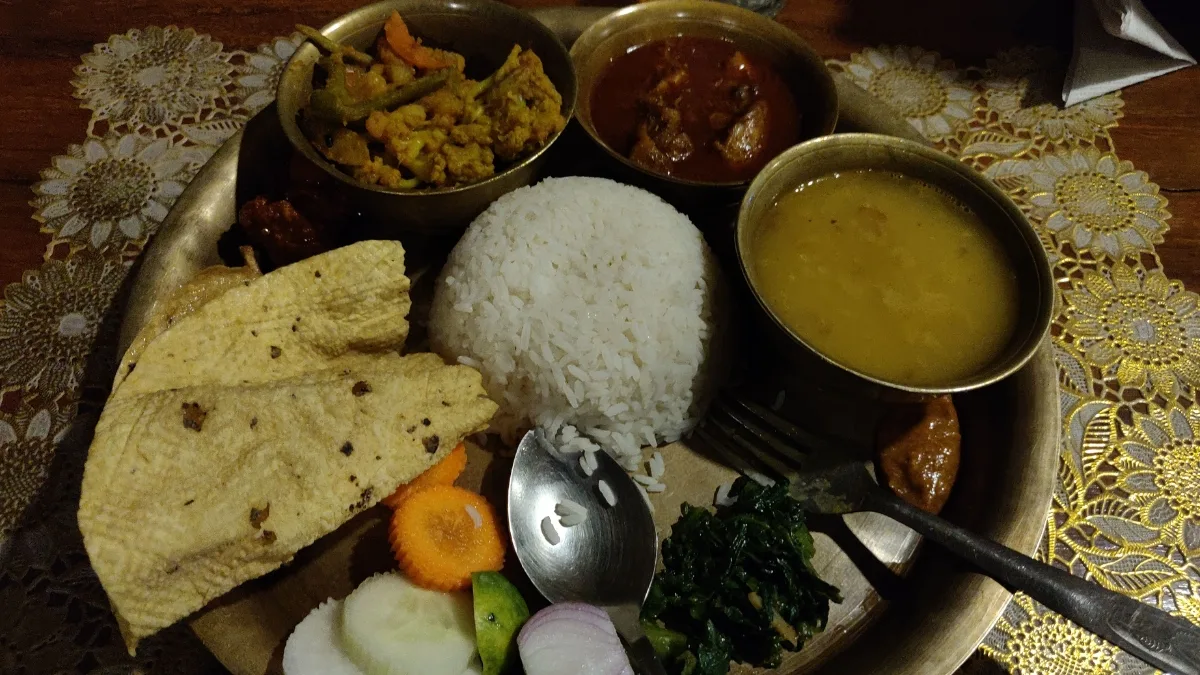
Dal Bhat is the heart of every Nepali home. It is a plate of steamed rice (bhat), lentil soup (dal), curry, and spicy pickles or sometimes other side dishes like eggs and cauliflower. Locals eat it twice a day, once in the morning and again in the evening.
Dal Bhat is known for keeping trekkers full of energy, which is why it’s often called the “fuel of the mountains.” You can get the dish in both vegetarian and non-vegetarian options. There is often meat curry in the dish during festivals like dashain and tihar.
Tip: In tea houses and local eateries, refills are usually free, so don’t hesitate to ask for seconds!
2. Momo – Nepali Dumplings
Momo is one of the most popular foods in Nepal and a must-try for anyone new to Nepali food. Momo’s are dumplings that are filled with minced meat or vegetables and can be steamed, fried, or served in a spicy soup called jhol momo.
You’ll find momo everywhere, from fancy restaurants to street stalls in Kathmandu and Pokhara. It’s often eaten for lunch or as an evening snack.
Tip: Try chicken or buff momos at local momo corners for the best experience.
3. Sel Roti – Sweet Festival Doughnut
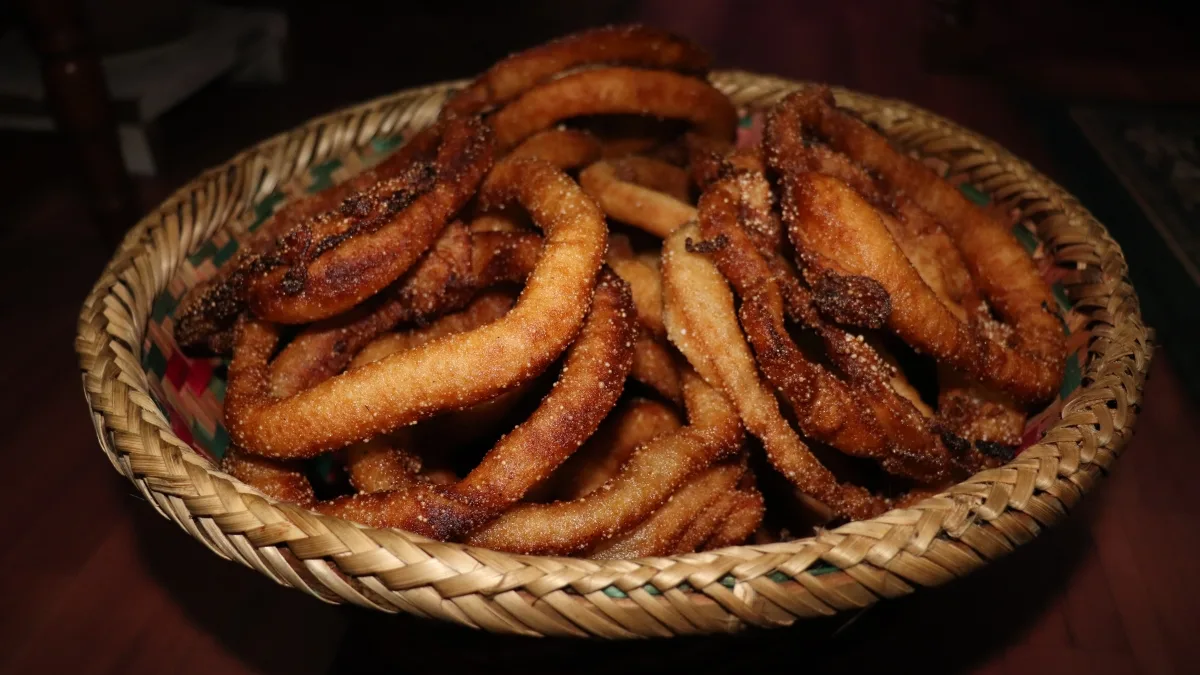
Sel Roti is a ring-shaped fried bread made from rice flour and sugar. With a crispy layer on the outside and soft inside, the dish is usually cooked during Dashain and Tihar festivals. Families prepare it fresh and serve it with yogurt or curry.
Sel Roti is often eaten for breakfast or offered to guests during celebrations. Especially during Tihar, as it is one of the main food during this festival. The warm smell of Sel Roti fills the streets during festival mornings.
Note: Buy Sel Roti early morning in local markets, it tastes best when it’s freshly fried.
4. Gundruk – Fermented Leafy Greens
Gundruk is one of the most traditional Nepali dishes and a great example of Nepal’s smart food culture. Made by fermenting leafy greens like mustard or radish leaves, it’s tangy and rich in probiotics.
People usually eat it with rice, dhido, or lentil soup. Gundruk is a winter food, often found in hill and mountain regions.
Tip: Try Gundruk soup in homestays, it is both healthy and homemade with love.
5. Thukpa – Himalayan Noodle Soup
Thukpa is a warm noodle soup influenced by Tibetan cuisine. It’s common in Himalayan areas and comes with either vegetables or meat. It’s especially comforting in cold weather or after a long trek. People in regions like Solukhumbu and Mustang eat Thukpa regularly during winter.
Tip: Order a spicy version with extra garlic as it helps beat the cold during high-altitude treks.
6. Sekuwa – Nepali Barbecue
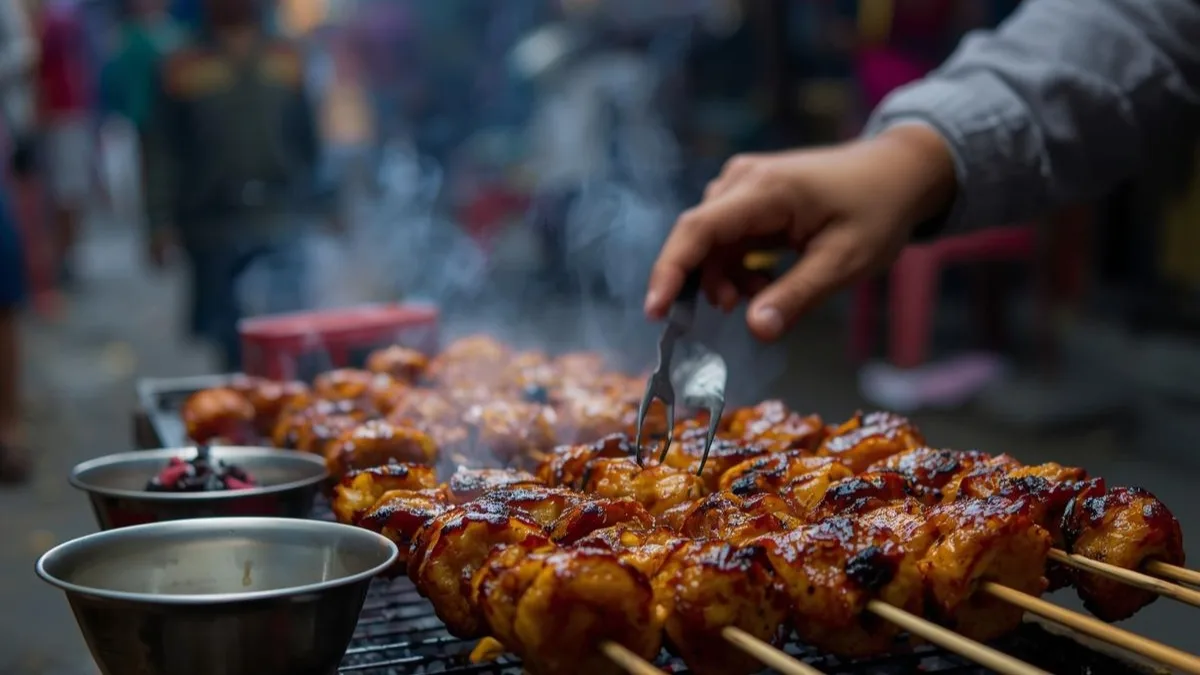
Sekuwa is Nepal’s version of barbecue, chunks of spiced meat grilled over a wood fire. Usually made with chicken, buff, or goat, it’s smoky, juicy, and full of flavor. You’ll find the best sekuwa stalls along highways and in Terai or hill towns. It’s mostly eaten at night, often with beaten rice and achar.
Tip: Pair Sekuwa with a glass of traditional Nepali drink like Raksi for a perfect combo.
7. Aalu Tama – Potato & Bamboo Curry
Aalu Tama, a dish made with potatoes, black-eyed peas, and fermented bamboo shoots is a favorite among the vegetarian people. It tastes tangy and savory and is a popular vegan curry. This dish shows how Nepali food uses simple local ingredients to make really tasty flavors. People usually eat it for lunch, especially in hilly areas like Dhading and Nuwakot.
Note: Ask for mild spice if you’re not used to strong flavors.
8. Dhido – Himalayan Porridge
Dhido is a thick porridge made from millet or buckwheat flour. It used to be food for farmers, but now you can find it in lots of restaurants. People eat it hot, usually with gundruk soup, butter, or spicy meat curry. Dhido is most popular in the countryside and mountain areas. It’s simple but really filling.
Tip: Eat Dhido with your hands for the full Nepali experience, it’s how locals do it!
9. Kwati – Festival Mixed Bean Soup
Kwati is a special dish served during Janai Purnima. It’s made by mixing nine kinds of sprouted beans and cooking them into a thick soup. This healthy meal is rich in protein and believed to boost strength during the monsoon season. It represents how traditional Nepali dishes connect to festivals and nutrition.
Note: Kwati is a vegan-friendly drink and perfect for rainy days.
10. Samay Baji – Newari Celebration Platter
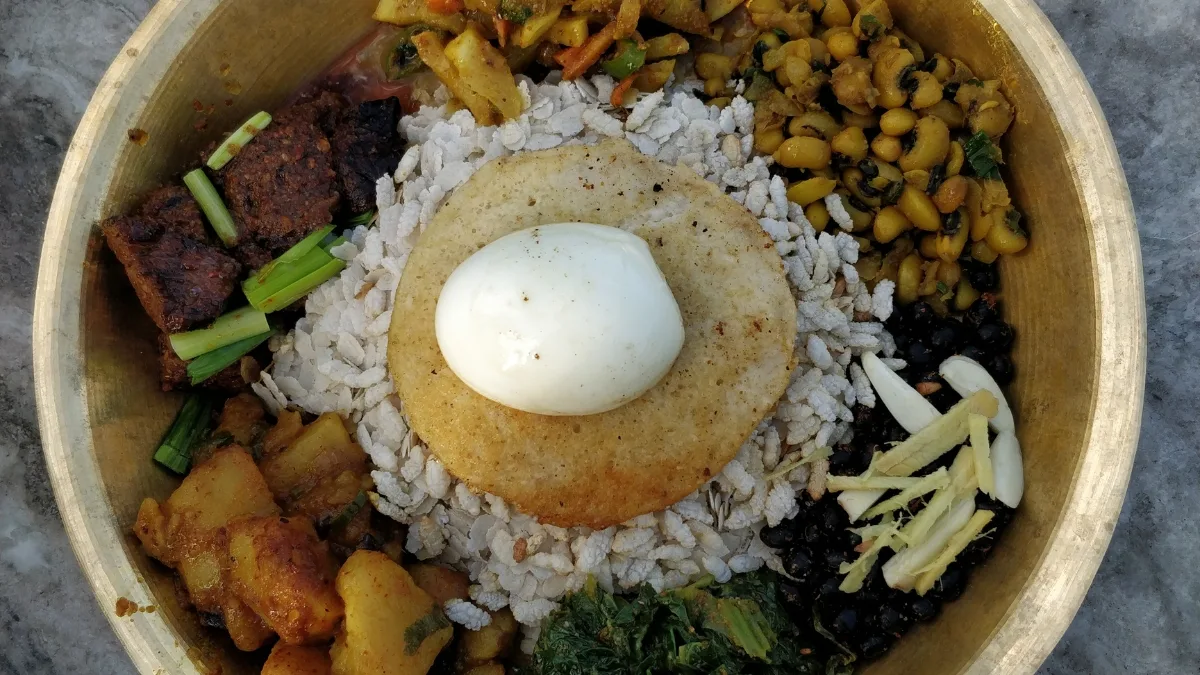
Samay Baji is one of the most iconic Newari dishes. The platter includes beaten rice, eggs, fried meat, lentils, and special condiments like chhoila and chatamari.
It is a must-try Nepali food that represents the rich Newari culture of Kathmandu Valley. Usually eaten during festivals and family gatherings, this dish is colorful, flavorful, and festive.
Tip: Try it at Newari restaurants in Patan or Bhaktapur for the most authentic taste.
11. Street Foods – Snacks for Adventurous Travelers
Nepali street food is full of surprises. You can enjoy spicy pani puri, chaat, and chhoila on busy roadsides and markets. They’re usually eaten as quick snacks in the afternoon or evening. These treats show the fun and spicy side of Nepali food culture.
Note: Eat from popular stalls where you see locals gathered, it is a good sign of freshness.
Traditional Nepali Liquors & Drinks
Food and drinks go together in Nepal. Traditional Nepali drinks tell stories just like the meals do. Whether they are warm or cold, each one is important in festivals, culture, and everyday life.
Raksi – Traditional Spirit
Raksi is a local alcohol made from millet, rice, or corn. It’s clear, strong, and usually made at home. Nepalis drink it during celebrations like Dashain and Tihar or when guests come over. You’ll mostly find Raksi in hill areas and villages.
Tip: Sip slowly as Raksi is way stronger than it looks!
Tongba – Fermented Millet Drink

Tongba is a warm drink from the eastern Himalayas, especially popular in Ilam and Taplejung. This drink is made by fermenting millet and served in a bamboo container filled with hot water. People sip it through a metal straw and keep refilling as they go. It is perfect for cold nights or post-trek relaxation.
Note: Tongba is more than a drink, a social experience shared among friends.
Aila – Newari Distilled Liquor
Aila is a strong, clear drink made by the Newar people in Kathmandu Valley. It’s made from rice or grains and served during festivals like Yomari Punhi and other family events. People know it for its strong smell and cultural importance.
Tip: Aila is traditionally served in tiny clay cups; just a small amount goes a long way!
Chhyang – Local Rice Beer
Chhyang is a mild rice beer found in Tamang and Sherpa villages. This drink can be described as a cloudy, slightly sweet drink served at social gatherings or after farming work. People usually make it at home and enjoy it with spicy side dishes.
Note: Chhyang is best when freshly brewed; ask locals if you want to try an authentic batch.
Non-Alcoholic Drinks
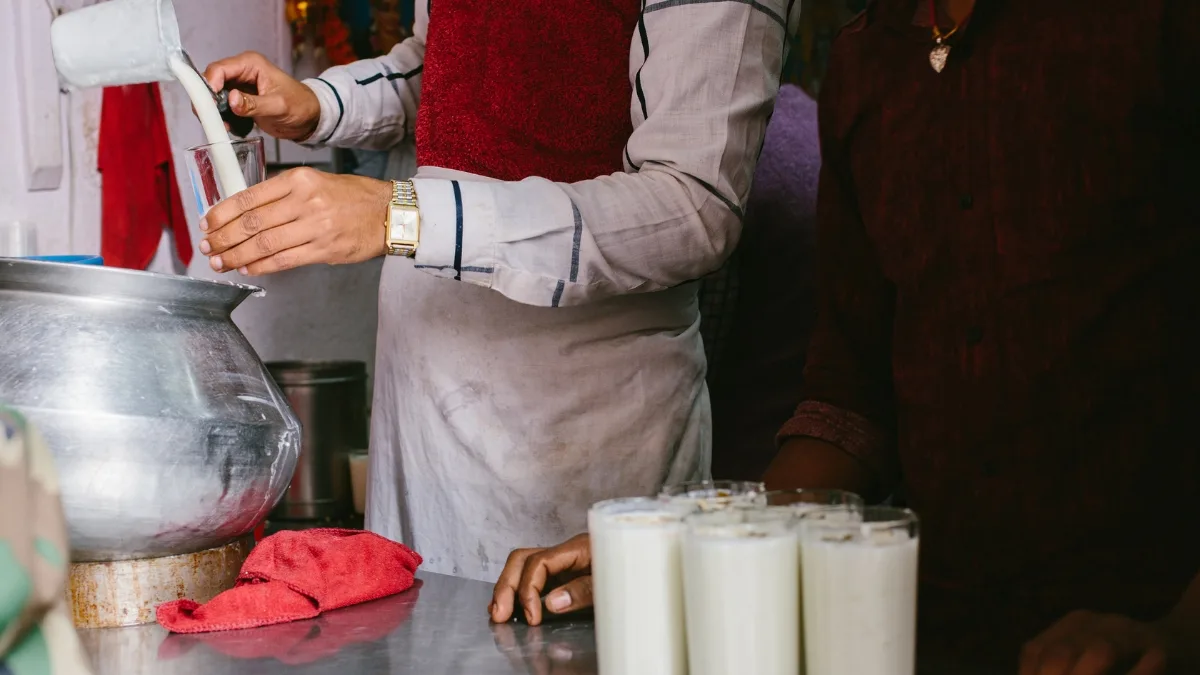
Not all traditional Nepali drinks are alcoholic. Lassi, made with yogurt and sugar, is great for hot days. Masala Chiya, a spiced milk tea, is a favorite across Nepal, especially in the mornings and evenings.
Tip: Try Lassi from local street vendors and Masala Chiya at tea houses during your trek.
Come join the fun with local famous Nepali Food & Drinks and party your heart out with Nepal Gateway Trekking on a guided Food and Drinks tour.
Vegetarian & Non-Vegetarian Traveler Guide
Nepali cuisine offers something for everyone, whether you’re vegetarian or non-vegetarian.
|
Dish |
Veg/Non-Veg |
|
Dal Bhat |
Both |
|
Momo |
Both |
|
Sel Roti |
Veg |
|
Gundruk |
Veg |
|
Thukpa |
Both |
|
Sekuwa |
Non-Veg |
|
Aalu Tama |
Veg |
|
Dhido |
Both |
|
Kwati |
Veg |
|
Samay Baji |
Both |
|
Street Foods |
Both |
Tips:
- During festivals, vegetarian options increase.
- Always ask for spice levels before ordering.
- In local restaurants, food is freshly cooked, but expect some waiting time.
How Food & Drinks Reflect Nepali Culture?
Famous Nepali Foods & Drinks are meals that represent togetherness, respect, and joy. During Dashain and Tihar, families gather for feasts. On Janai Purnima or Yomari Punhi, traditional Nepali dishes like Kwati and Yomari are shared among loved ones.
Eating by hand is common, and sharing food shows friendliness. The refill culture, where hosts keep topping up your plate- is a sign of warmth and generosity in Nepali homes.
Final Thoughts – Taste Nepal, From Plate to Glass
The mix of flavors, tradition, and hospitality makes Nepal’s food really memorable. Every bite, from Dal Bhat to Sel Roti, tells a story about community and celebration. Every sip of Raksi or Chhyang shows the spirit and diversity of the land.
Famous Nepali Foods & Drinks connect travelers to the heart of Nepal, its people, festivals, and heritage.
Explore Nepal’s flavors, one bite and one sip at a time with Nepal Gateway Trekking. Contact us today!!
FAQ Section
What is the most famous Nepali food?
Dal Bhat is the most famous Nepali food; it is eaten daily across the country.
What Nepali drinks should travelers try?
Raksi, Tongba, Aila, and Chhyang are traditional Nepali drinks worth tasting.
Are Nepali dishes very spicy?
Most are mildly spiced, but you can always ask for less heat when ordering.
Is Nepali cuisine vegetarian-friendly?
Yes, there are many Nepali vegetarian dishes like Gundruk, Aalu Tama, and Kwati.
Where can I eat authentic Nepali food & drinks?
Local restaurants in Kathmandu, Pokhara, and hill regions serve the best traditional meals.
What is the Newari Khaja Set?
It is a platter of beaten rice, meat, egg, and pickles, part of the Newari food tradition.
Are traditional Nepali liquors safe for travelers?
Yes, traditional Nepali liquors are safe if you buy them from licensed or trusted local vendors.
What is the best dish for trekkers?
Dal Bhat is the best dish for trekkers as it is nutritious and keeps you full for long hikes.
How to eat like a local in Nepal?
To eat like a local Nepali person, you must use your hands, share food, and never say no to a refill.
Which regional dishes are must-tries for veg/non-veg travelers?
For vegetarians and non-veg travellers, you can try Thukpa in the mountains, Samay Baji in the valley, and Sekuwa in the Terai.
